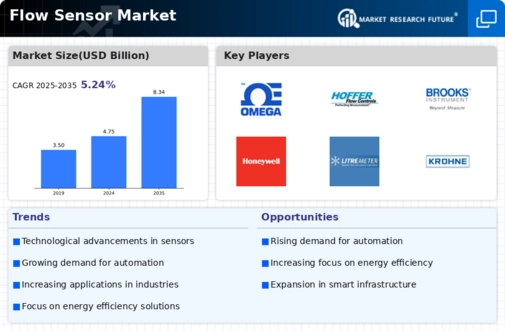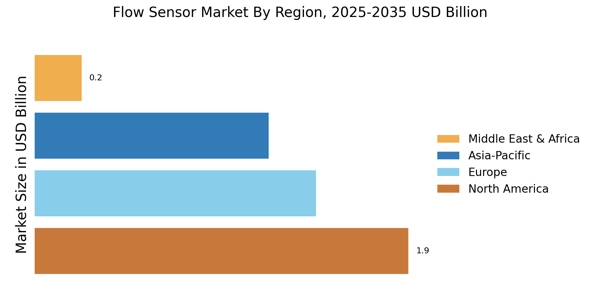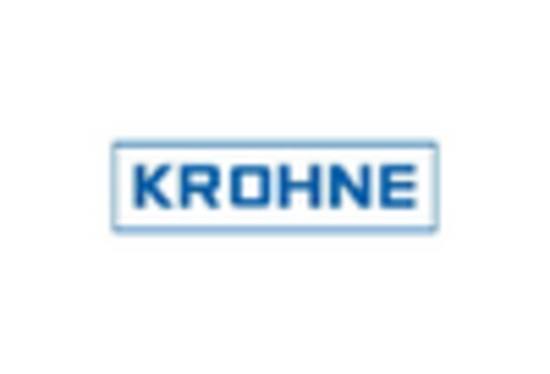Growth in HVAC Applications
The expansion of heating, ventilation, and air conditioning (HVAC) systems is a key driver for the Flow Sensor Market. With increasing awareness of energy efficiency and indoor air quality, the HVAC sector is evolving rapidly. Flow sensors are essential for optimizing airflow and ensuring the effective operation of HVAC systems. The market for HVAC systems is projected to grow significantly, with estimates suggesting a compound annual growth rate of around 5%. This growth is likely to be accompanied by a rising demand for flow sensors that can provide accurate measurements and enhance system performance. As energy regulations become more stringent, the role of flow sensors in HVAC applications will become increasingly critical, further propelling market growth.
Rising Demand in Water Management
The increasing need for efficient water management systems is driving the Flow Sensor Market. As urbanization accelerates, the demand for reliable water supply and wastewater management solutions intensifies. Flow sensors play a crucial role in monitoring and controlling water flow, ensuring optimal usage and reducing wastage. According to recent estimates, the water management sector is projected to grow at a compound annual growth rate of approximately 6.5% over the next few years. This growth is likely to propel the adoption of advanced flow sensors, which are essential for maintaining water quality and managing resources effectively. The integration of smart technologies in water management further enhances the relevance of flow sensors, making them indispensable in modern infrastructure.
Emergence of Smart Metering Solutions
The advent of smart metering technologies is reshaping the Flow Sensor Market. Smart meters, which utilize advanced flow sensors, enable utilities to monitor consumption patterns and manage resources more effectively. The Flow Sensor Market is anticipated to grow at a robust pace, driven by the need for improved energy management and reduced operational costs. Flow sensors integrated into smart metering systems provide accurate data that supports demand response initiatives and enhances customer engagement. As utilities seek to modernize their infrastructure and adopt smart technologies, the demand for flow sensors is expected to surge, indicating a promising outlook for the market.
Industrial Automation and Process Control
The trend towards industrial automation is significantly influencing the Flow Sensor Market. Industries are increasingly adopting automated systems to enhance efficiency, reduce operational costs, and improve safety. Flow sensors are integral to process control, providing real-time data that enables precise monitoring of fluid dynamics. The manufacturing sector, in particular, is expected to witness substantial growth, with investments in automation projected to reach billions in the coming years. This shift towards automation not only boosts productivity but also necessitates the use of advanced flow measurement technologies. As industries strive for greater accuracy and reliability in their operations, the demand for sophisticated flow sensors is likely to rise, thereby driving market expansion.
Regulatory Compliance and Safety Standards
The increasing emphasis on regulatory compliance and safety standards is a significant driver for the Flow Sensor Market. Industries are required to adhere to stringent regulations regarding fluid management and environmental protection. Flow sensors are vital for ensuring compliance with these regulations, as they provide accurate measurements necessary for reporting and monitoring purposes. The regulatory landscape is evolving, with new standards being introduced to enhance safety and environmental sustainability. This trend is likely to drive the adoption of flow sensors across various sectors, including oil and gas, pharmaceuticals, and food and beverage. As companies strive to meet compliance requirements, the demand for reliable flow measurement solutions will continue to grow, positively impacting the market.

















Leave a Comment